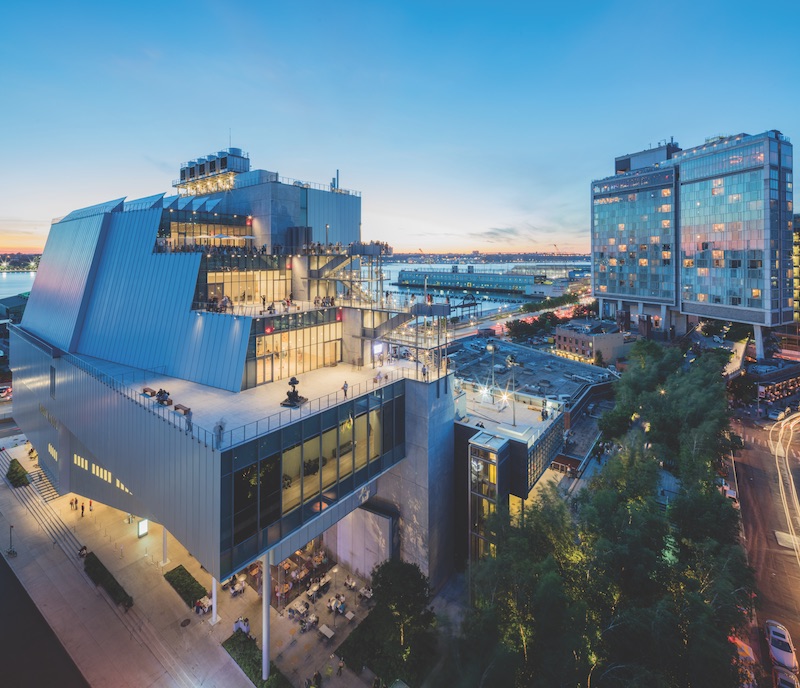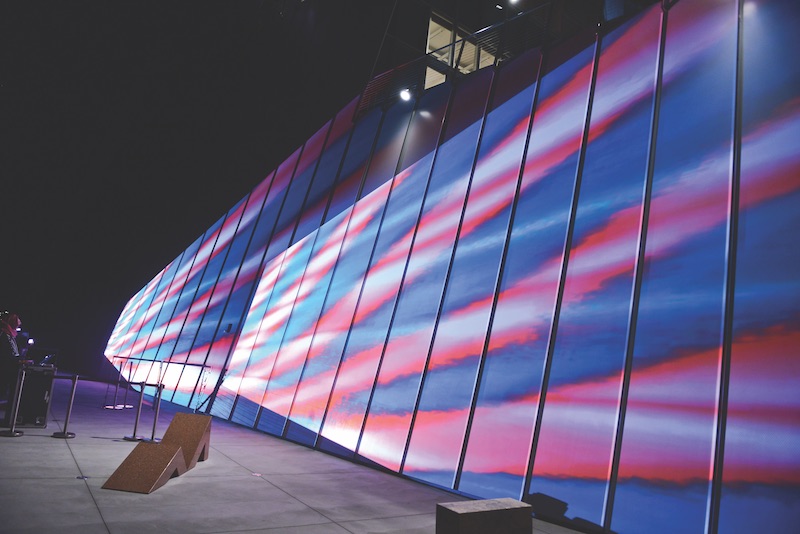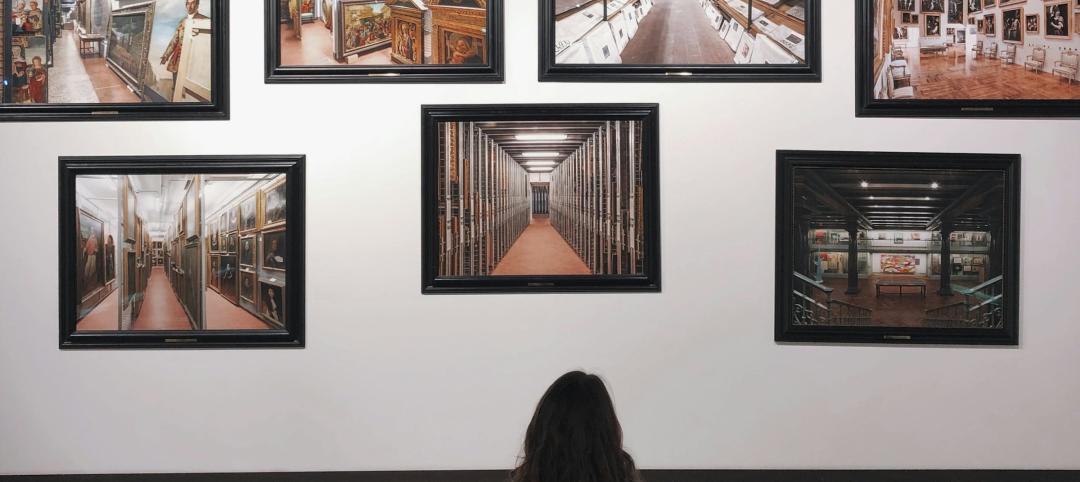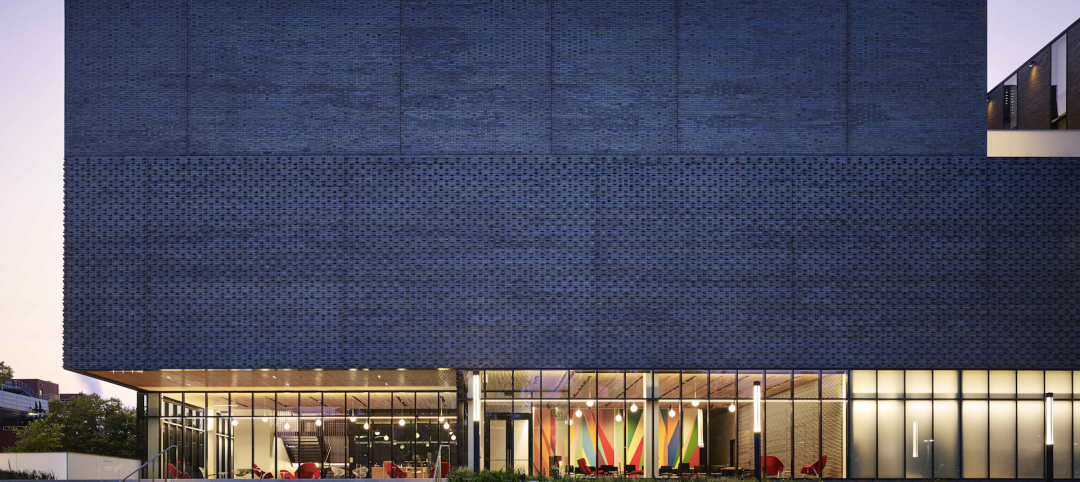Developers and building owners are constantly searching for pathways to extend their buildings to the great outdoors.
Take the case of the iconic Willis Tower in Chicago, whose owners recently announced a $500 million facelift of the nation’s second-tallest building. That renovation will include a 30,000-sf outdoor deck and garden and a new three-story, all-glass structure that will sit on top of the skyscraper’s existing street-level stone plaza. The new design will break the barrier that currently separates the building from the urban streetscape.
Museums are especially keen to use their outdoor areas for exhibits and gathering places for patrons. One such building is the new Whitney Museum of American Art, located between the Hudson River and the High Line in New York’s Meatpacking District.
“There was a strong desire to expand the notion of what the gallery might be,” says Scott Newman, FAIA, Partner at Cooper Robertson, the Whitney Museum’s executive architect. (Renzo Piano Building Workshop was the design architect.)
Newman and his firm’s Senior Associates Greg Weithman, AIA, and Thomas Holtzman recently published a white paper, “Exterior as Gallery,” which details the design and engineering complexities behind the Whitney’s deployment of 13,000 sf of outdoor space and terraces to attract new audiences.
The Whitney engages the High Line’s year-round crowds “with super-scale works of art mounted on its exterior planes,” the authors write.
The museum’s façade consists of seven-inch-thick architectural precast concrete panels—some weighing 20,000 pounds—and a steel-plate-clad unitized curtain wall system. Ultra-clear, low-iron glass walls make the outdoor space an extension of the interior galleries. A dense pattern of stainless steel bolts project half an inch off the face of the building; crews can tether lanyards to the bolts to lock in, level, and stabilize an art installation and platform.
 The Whitney project team: Renzo Piano Building Workshop and Cooper Robertson (architects), Robert Silman Associates (SE), Philip Habib & Associates (CE), WTM Engineers (flood mitigation), Jaros, Baum & Bolles (MEP/FP), Heintges (building envelope/curtain wall consultant), Arup (lighting), Mathews Nielson Landscape Architecture, and Turner Construction (CM). Photo: Ben Gancsos.
The Whitney project team: Renzo Piano Building Workshop and Cooper Robertson (architects), Robert Silman Associates (SE), Philip Habib & Associates (CE), WTM Engineers (flood mitigation), Jaros, Baum & Bolles (MEP/FP), Heintges (building envelope/curtain wall consultant), Arup (lighting), Mathews Nielson Landscape Architecture, and Turner Construction (CM). Photo: Ben Gancsos.
Works of art can also be anchored to four art terraces suspended from the façade. The terraces, which are connected by stairs, provide visitors with a variety of vantage points. They also function as party spaces.
To suspend art legally off of the façade that faces the High Line’s Maintenance & Operations Building, the Whitney acquired the air rights of the M&O terrace. To safely anchor art to the museum’s terraces, the project team integrated hardware produced by TriPyramid, which specializes in high-performance yacht rigging.
Newman says it was imperative to integrate the exteriors as gallery space into the façade early in the design process “so it didn’t look like an afterthought.”
He notes, too, that what distinguishes the Whitney from other museums is that its exterior galleries were designed to be flexible enough to house curated exhibits that change over time. That meant taking into account exterior structural loads, lighting, and audio-visual capabilities.
The façade required local structural frame engineering. Robert Silman Associates, the project’s structural engineer, reinforced the structure to handle the addition of a 600-pound pullout load. The terraces have technology consolidation points with company switches for theatrical performances and A/V needs, cable passes for broadcast events, and data receptacles.
As other building typologies, such as hotels, retail, and offices, are programming their outdoor spaces, Newman cautions that it’s critical for owners to keep in mind that “this is a real investment in the initial cost of the building. Owners also need to accept the idea that they are going to have to curate events, or commit to temporary exhibits,” all of which have costs attached to them.
 New York’s new Whitney Museum makes full use of its 13,000 sf of outdoor space. Art installations can be moored to the precast concrete panels with integrated bolts and anchors from yacht rigging specialist TriPyramid. Photo: Cooper Robertson.
New York’s new Whitney Museum makes full use of its 13,000 sf of outdoor space. Art installations can be moored to the precast concrete panels with integrated bolts and anchors from yacht rigging specialist TriPyramid. Photo: Cooper Robertson.
Related Stories
Museums | Mar 25, 2024
Chrysler Museum of Art’s newly expanded Perry Glass Studio will display the art of glassmaking
In Norfolk, Va., the Chrysler Museum of Art’s Perry Glass Studio, an educational facility for glassmaking, will open a new addition in May. That will be followed by a renovation of the existing building scheduled for completion in December.
Museums | Mar 11, 2024
Nebraska’s Joslyn Art Museum to reopen this summer with new Snøhetta-designed pavilion
In Omaha, Neb., the Joslyn Art Museum, which displays art from ancient times to the present, has announced it will reopen on September 10, following the completion of its new 42,000-sf Rhonda & Howard Hawks Pavilion. Designed in collaboration with Snøhetta and Alley Poyner Macchietto Architecture, the Hawks Pavilion is part of a museum overhaul that will expand the gallery space by more than 40%.
Designers | Feb 23, 2024
Coverings releases top 2024 tile trends
In celebration of National Tile Day, Coverings, North America's leading tile and stone exhibition, has announced the top 10 tile trends for 2024.
Giants 400 | Feb 8, 2024
Top 40 Museum Construction Firms for 2023
Turner Construction, Clark Group, Bancroft Construction, STO Building Group, and Alberici-Flintco top BD+C's ranking of the nation's largest museum and gallery general contractors and construction management (CM) firms for 2023, as reported in Building Design+Construction's 2023 Giants 400 Report.
Giants 400 | Feb 8, 2024
Top 40 Museum Engineering Firms for 2023
Arup, KPFF Consulting Engineers, Alfa Tech Consulting Engineers, Kohler Ronan, and Thornton Tomasetti top BD+C's ranking of the nation's largest museum and gallery engineering and engineering/architecture (EA) firms for 2023, as reported in Building Design+Construction's 2023 Giants 400 Report.
Giants 400 | Feb 8, 2024
Top 70 Museum Architecture Firms for 2023
SmithGroup, Gensler, Ayers Saint Gross, Quinn Evans, HGA, and Cooper Robertson head BD+C's ranking of the nation's largest museum and gallery architecture and architecture/engineering (AE) firms for 2023, as reported in Building Design+Construction's 2023 Giants 400 Report.
Museums | Jan 8, 2024
Achieving an ideal visitor experience with the ADROIT approach
Alan Reed, FAIA, LEED AP, shares his strategy for crafting logical, significant visitor experiences: The ADROIT approach.
Giants 400 | Nov 6, 2023
Top 65 Cultural Facility Construction Firms for 2023
Turner Construction, Clark Group, Whiting-Turner, Gilbane, and Holder Construction top BD+C's ranking of the nation's largest cultural facilities sector general contractors and construction management (CM) firms for 2023, as reported in the 2023 Giants 400 Report. Note: This ranking includes revenue from all cultural building sectors, including concert venues, art galleries, museums, performing arts centers, and public libraries.
Giants 400 | Nov 6, 2023
Top 60 Cultural Facility Engineering Firms for 2023
KPFF, Arup, Thornton Tomasetti, Tetra Tech, and WSP head BD+C's ranking of the nation's largest cultural facilities sector engineering and engineering architecture (EA) firms for 2023, as reported in the 2023 Giants 400 Report. Note: This ranking includes revenue from all cultural building sectors, including concert venues, art galleries, museums, performing arts centers, and public libraries.
Giants 400 | Nov 6, 2023
Top 110 Cultural Facility Architecture Firms for 2023
Populous, Gensler, HGA, DLR Group, and Quinn Evans top BD+C's ranking of the nation's largest cultural facilities sector architecture and architecture engineering (AE) firms for 2023, as reported in the 2023 Giants 400 Report. Note: This ranking includes revenue from all cultural building sectors, including concert venues, art galleries, museums, performing arts centers, and public libraries.

















